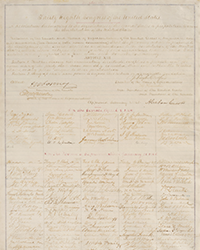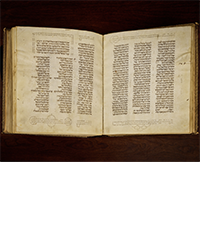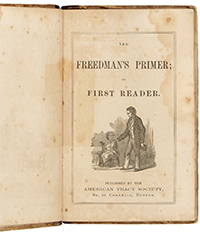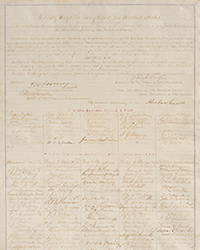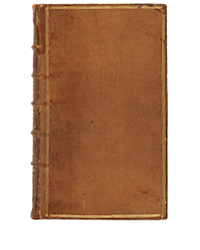The George S. MacManus Company offers a catalogue dedicated to material on the Civil War, their Catalogue 415. It is part of a series, 500 items selected from an inventory of over 5,000. These 500 items all come from authors whose last initials are "A" or "B." It's a start. Books and pamphlets cover battles, generals, ordinary soldiers, prisoners, opinions, and history, with a large number of accounts of individual regiments that fought in the war. Both sides are represented. Here are a few samples of the items to be found herein.
The logical starting point for a review of a Civil War catalogue is the start of the Civil War. The first shots were fired at Fort Sumter, South Carolina. Here is a contemporary account from a southern point of view, published near the battle site in Charleston: The Battle of Fort Sumter and First Victory of the Southern Troops, April 13, 1861. South Carolina demanded Union troops leave Fort Sumter in the harbor, the Union declined, and the war was on. This pamphlet describes the bombardment of the fort and other details compiled by the local press, and an appendix prints correspondence leading up to the attack. Item 239. Priced at $2,250.
Commanding southern forces in Charleston at the time of the attack on Fort Sumter was General P.G.T. Beauregard. Beauregard would go on to lead the Confederate victory in the First Battle of Bull Run a few months later, and was one of the South's leading commanders throughout the war. However, his influence over Confederate policy declined as he was engaged in a bitter, lifelong dispute with Jefferson Davis. In 1863, Beauregard published his Principles and Maxims on the Art of War. This was the General's personal copy, and is signed, "G.T. Beauregard." Beauregard always left off the "P." Item 290. $7,500.
Not all southerners supported the Confederacy. Charles C. Anderson maintained that the number of southerners fighting for the North was almost two-thirds as large as the number fighting for the South. Item 82 is one of three copies offered of his 1912 book, Fighting by Southern Federals. Anderson claimed that over 600,000 southerners fought for the Union, versus 1,000,000 for the Confederacy. He breaks them down as 296,579 white soldiers living in the South, approximately 200,000 men living in the North who were born in the South, and 137,676 black soldiers. Anderson's book provides details of their activities. $300.
Item 125 is a set of regulations for the Confederate army, though they were mostly borrowed from the Union: Army Regulations Adopted for the Use of the Army of the Confederate States, in Accordance with Late Acts of Congress. Revised from the Army Regulations of the Old U.S. Army, 1857... This set of regulations was published in 1861, and is particularly rare as it was printed in New Orleans. New Orleans fell to Union forces in 1862, so not so many Confederate items were published in that city. $3,000. Item 126 is another copy of these regulations, but it was published in Richmond in 1862. It may have been meant for Confederate soldiers, but this copy was picked up by a Union soldier. It contains the ownership signature of S.P. Driver of the Massachusetts 22nd Volunteers, with his comment, "Death to traitors." $2,000.
After the Civil War essentially came to an end at Appomattox, Confederate President Jefferson Davis felt the wisest choice was to hightail it out of the country. He was uncertain what fate awaited him in America, but the assassination of President Lincoln increased his fears as to how he would be received. He hoped to flee to Cuba, but was captured in Georgia. That event is described in The Capture of Jefferson Davis, by David Rankin Barbee, published in 1947. Barbee attempts to squelch the legend, the subject of numerous caricatures at the time of his capture, that Davis attempted to escape disguised as a woman. That was not considered manly. Davis' wife maintained that she had placed a coat and her shawl on her husband to protect him from the chilly air as well as making him less recognizable from a distance, but that he was not dressed as a woman. This copy contains a presentation inscription from Sue Ruffin Tyler, daughter-in-law of President John Tyler. Wait a minute! Tyler's daughter-in-law? Wasn't he President from 1841-1845? How was his daughter-in-law around to sign a book in 1947? The answer is President Tyler was a most prolific president. He had eight children with his first wife, and after she died, seven more with his second. One of those was Lyon Gardiner Tyler, born when his father was 63 years old. After Lyon's first wife died, he married Sue Ruffin Tyler, half his age, when he was 68. Lyon Tyler then produced three more children with his second wife, who lived until 1953. Amazingly, President Tyler still has living grandchildren. Item 185. $100.
The George S. MacManus Co. may be reached at 610-520-7273 or books@macmanus-rarebooks.com. Their website is www.macmanus-rarebooks.com.


